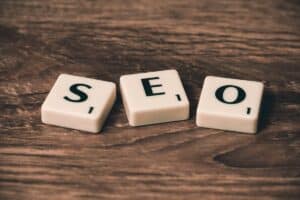How To Create A High-Converting Landing Page

Do you know what a landing page is? Widely used in specific campaigns and for selling services and businesses in general, landing pages are crucial to a company’s success.
Creating a high-conversion landing page (also called LP) involves a combination of customer-friendly design, content built according to the company’s positioning, customer profile, page objective, among other aspects. All of this is aimed at optimizing the user experience, through SEO strategies and accessibility techniques.
What is a landing page?
Landing page means “destination page”, and is an online page created with a specific objective, be it to convert visitors into customers, engage a campaign , attract investors to a business, among many others. Unlike regular website pages, landing pages are designed and developed with a single (or multiple) purposes; designed with a clear focus, optimizing the user experience for a specific action.
Types of landing pages
There are several types of landing pages and everything varies according to the objective and purpose of each one. There are LPs intended for sales (also called sales pages); lead capture; events; pre-launches (which usually play around with spoiler content, providing an exclusive experience for the user); applications; testimonials; crowdfunding; maintenance, among others.
Elements of a landing page
Now that you know what the different types of LPs are and what they are for, let’s take a closer look at the structure of one. Although landing pages have their differences, the elements follow the same characteristics most of the time. Check it out:
Titles and subtitles
Titles and subtitles are clearly important in a LP, a task that involves development, SEO and copywriting. They should be clear, concise and attractive, written with technical rigor and immediately capturing the visitor’s attention in a way that communicates its purpose. In the case of the subtitle, it should serve as a reinforcement, but in a way that does not seem dispensable. To do this, provide more context and details, expanding on the message conveyed by the main title.
Some tips for having good titles and subtitles are: using impactful words and being specific, making clear the details of your offer and what its benefits are.
Clear description of the offer
Another part of the text, the description of the offer, is very important, as it must explain in detail what is being offered/sold and why the customer will not find the same thing elsewhere, with the same benefits, values and characteristics.
It’s important to be clear and direct, focusing on the problems your offering solves and the specific benefits it provides to the visitor.
Images
A landing page isn’t just about text. It’s important to capture the user’s attention with beautiful, high-quality images that complement and reinforce the message being conveyed. Use media that is clear, attractive and always pay close attention to copyright issues.
Social proof
There is nothing more convincing than testimonials from former customers and users who are satisfied with certain products or services. Reviews, success stories or customer numbers help build trust and credibility in the brand. It is important to always filter this section, including authentic, relevant testimonials with specific information about what helped each person. Also pay attention to the authorizations to use the name and photo of the people in this section.
CTA
Finally, a good CTA, popular abbreviation for “call to action”, is the button that leads to the purchase of a specific product or service, or contact for more information. It is usually very attractive and is located at the end of the LP, with several shortcuts throughout it.
Details that will make your landing page high-converting
In addition to the above elements, it is essential to focus on some key elements that can positively influence the user experience and increase conversion rates on a landing page.
Catchy titles
Titles must be clear, captivating, concise and, above all, attractive. Their main objective is to capture the attention of those who are visiting the LP, that is, they must be creative, democratic and convey the main benefit of your product or service.
Beware of Design
A landing page design should be designed to be intuitive for all types of visitors, not just your target audience. The layout should be visually pleasing, with a clean and organized design, making it easy to navigate on both computers and mobile phones, i.e., have a responsive and functional design.
Coherent visual resources
In addition to graphics, the visual aspect of the LP must also have elements that are consistent with its proposal: if it is a page that is, for example, selling an accounting service, the images and videos must complement the offer. Use images and videos that are directly related to your product or service, strategically designed to be relevant and of high quality.
It is also important to have a demonstration of the product or service so that the user can better understand its results. Including images that better explain the product or service sold helps the customer better understand how it works, easily leading them to purchase it.
A/B Testing
A/B testing is an essential technique for optimizing the performance of a landing page and improving conversion rates, so it is extremely important that the person responsible for developing the LP uses good analysis tools to monitor user behavior on the page and perform tests to discover which versions of the page generate more conversions: this involves adjustments to CTAs, titles, images, and colors.
Conclusion
Creating a high-conversion landing page requires continuous planning, execution, and optimization based on data. However, the result can be quite satisfactory if the briefing is in line with the specific needs of the audience and the company’s objective, generating positive results for the business.







